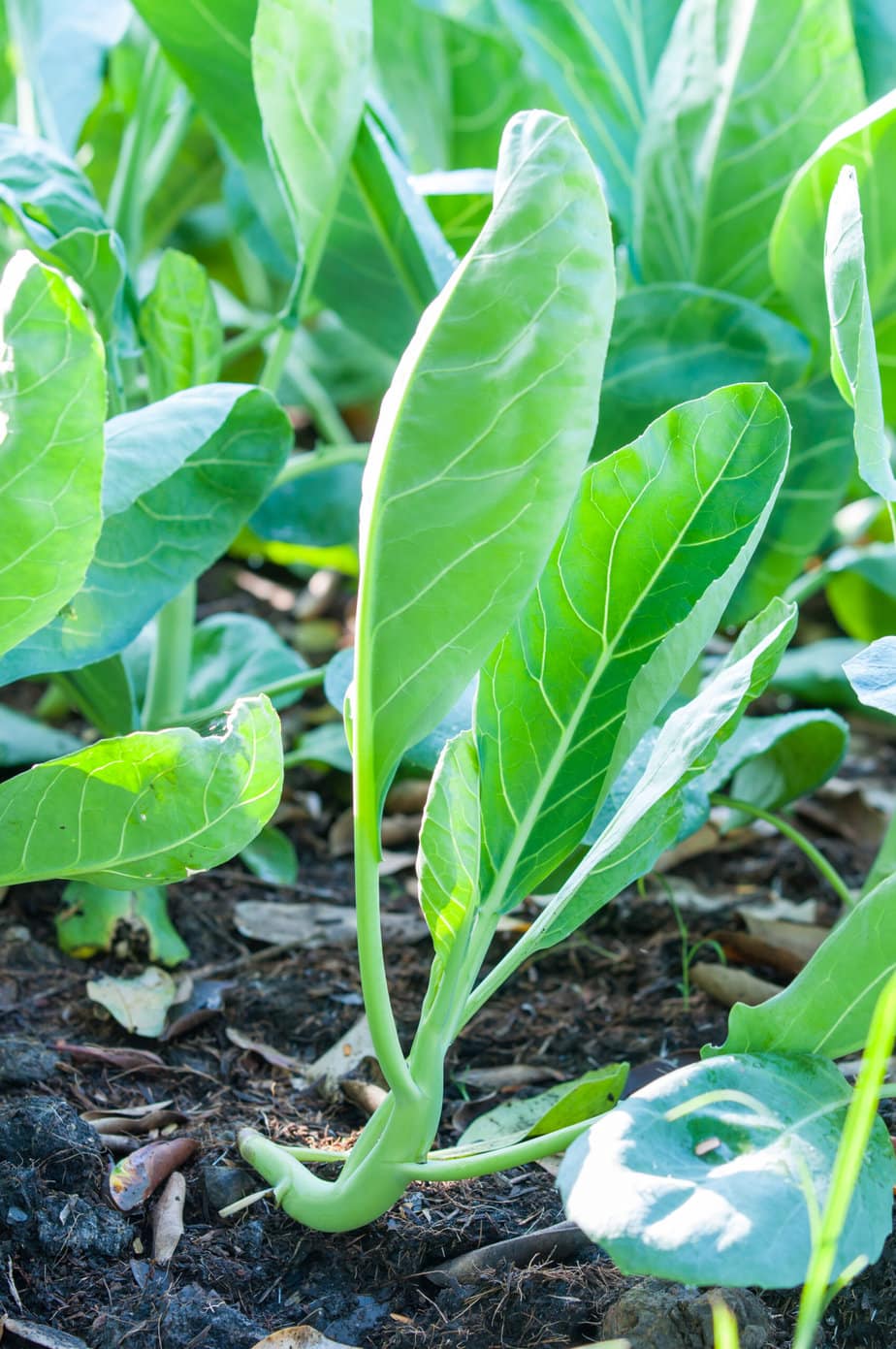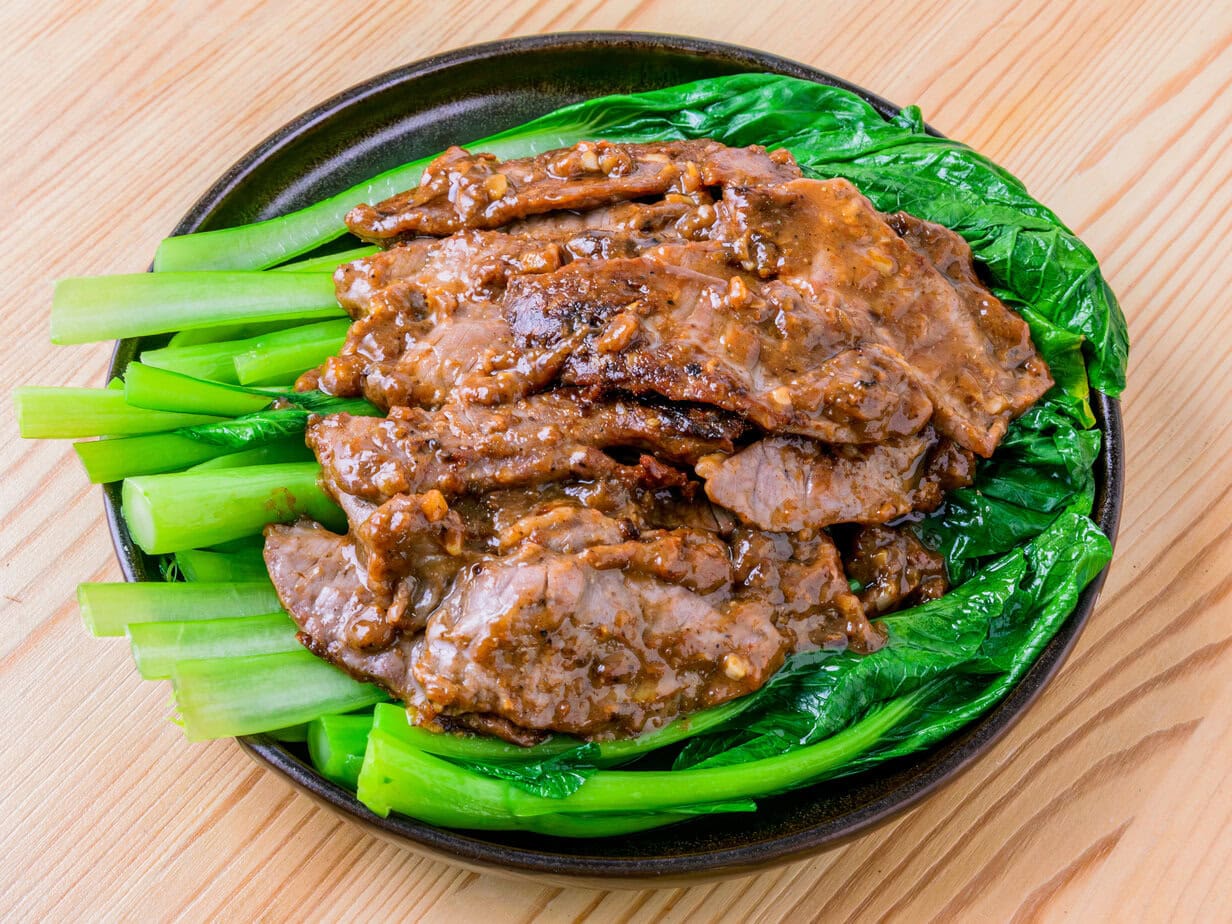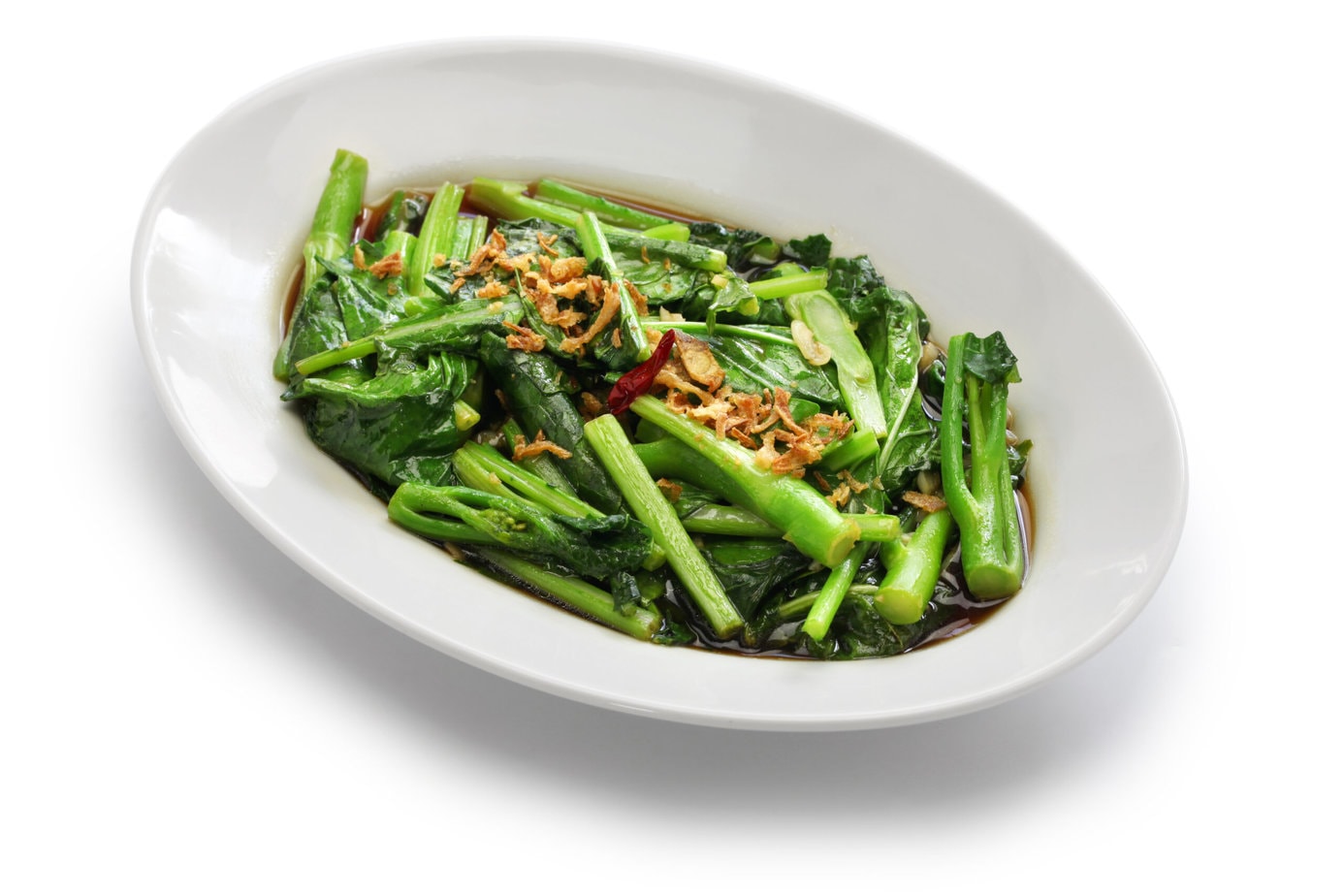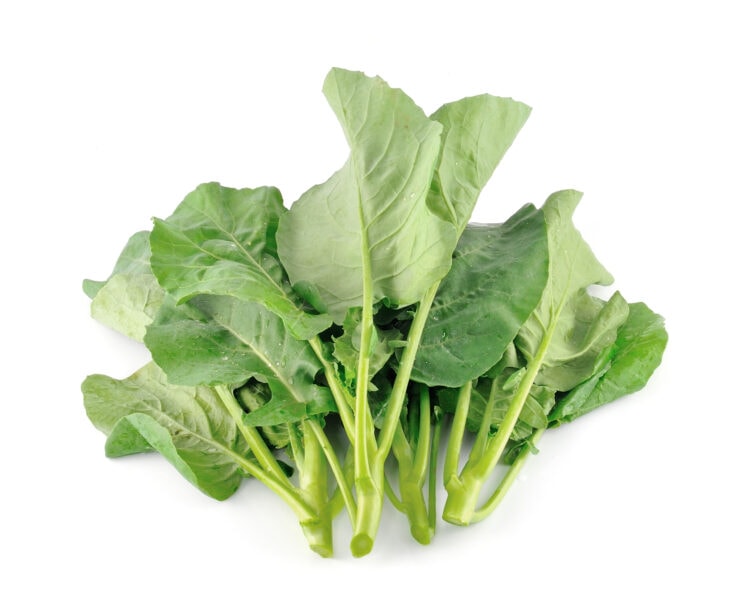What is kai lan?
In Asia, it’s also called gai lan; around here you’ll more often hear “Chinese broccoli” or “Chinese kale.” So what is kai lan? It’s a variety of cabbage from southern China that doesn’t have the typical cabbage flavor… It’s closer to broccoli—hence the French name.
It’s an annual vegetable that tolerates winter cold. In appearance, kai lan looks a lot like kale or romaine lettuce. It grows in clusters of thick, flat leaves, with small white or yellow flowers. Good to know: everything is edible—the leaves, stems, and flowers.

Origin of kai lan
It’s thought that kai lan once grew mainly in Europe. The Portuguese brought it to China, and since then it’s been more widely eaten in Asia. The Chinese ultimately made kai lan their own again and turned it into a mainstay of Chinese cuisine.

What does kai lan taste like?
Kai lan tastes more like broccoli than the cabbage we know, yet it’s milder and sweeter than broccoli. Asian cooking embraces layered flavors, which is why kai lan’s character really shines in those dishes.
Its flavor does mellow a bit when cooked. This vegetable readily absorbs oils and sauces, helping the flavors of your dish meld beautifully.

Cooking with kai lan
Kai lan is versatile: wok-fried, boiled, or steamed, it’s very easy to cook. Simply melt a knob of butter in a pan, sauté the kai lan, and you’re done. Simple but effective.
If you want to venture into Asian cooking, you’ll need a few more ingredients. Feel free to use garlic, sesame seeds, fried onions, ginger…. Boil the stems and leaves, drain well, and drizzle your kai lan with oyster sauce. (Scroll down for a full recipe)
The sweet-savory sauce is readily absorbed and pairs perfectly with this vegetable. You can also stir-fry it with beef or fish. Rice and fried foods are also great sides.
Swap it in for Chinese cabbage in this stir-fried beef noodle recipe
Benefits of kai lan
You’ll find it in plenty of Chinese dishes, and it’s quite low in calories. That said, this vegetable is rich in vitamins A and C.
It’s also a great source of calcium, fiber, and iron; adding it to your diet can help support your immune system. In short, kai lan delivers the key minerals needed for good health.
Where to find kai lan?
Good news: you can find it year-round at the market! It can be harder to spot in mainstream stores, but you’ll find several varieties in Asian grocery stores.
Choose it fresh: kai lan should be a bright, even green. If you plan to eat the flowers, make sure they’re not too old—avoid blooms that are too open.
How to store kai lan?
Like most cabbages, fresh kai lan keeps for about a week. Place it in a freezer bag and store it in your refrigerator’s crisper drawer to maximize freshness.

Ingredients
- 2 cloves minced garlic
- 250 g kai lan
- 2 tablespoons vegetable oil
For the sauce
- 1.5 tablespoons oyster sauce
- 0.5 tablespoon light soy sauce
- 0.5 teaspoon dark soy sauce
- 2 teaspoons Shaoxing wine
- 1 teaspoon sesame oil
- 1 tablespoon water
- 1 teaspoon sugar
- 1 pinch white pepper
- 1 pinch salt
To thicken the sauce:
- 2 teaspoons cornstarch
- 1.5 tablespoons water
Instructions
- Trim the tough ends and split the kai lan in half lengthwise. Wash thoroughly to remove soil and grit. (If you are using another variety of kailan, please read the recipe notes below.) Drain well and set aside.250 g kai lan
- In a small bowl, add the sauce ingredients and stir to combine. Taste and adjust to your preference. In another bowl, mix the cornstarch with the water.1.5 tablespoons oyster sauce, 0.5 tablespoon light soy sauce, 0.5 teaspoon dark soy sauce, 2 teaspoons Shaoxing wine, 1 teaspoon sesame oil, 1 tablespoon water, 1 teaspoon sugar, 1 pinch white pepper, 1 pinch salt, 2 teaspoons cornstarch, 1.5 tablespoons water
- Heat a wok over medium heat. When hot, reduce the heat to low and add the oil. Add the minced garlic and stir continuously until it just begins to turn light golden. Turn off the heat and immediately remove the garlic with a slotted spoon (note: garlic burns quickly once golden and will turn bitter). Leave the garlic-infused oil in the wok.2 tablespoons vegetable oil, 2 cloves minced garlic
- Heat the wok (with the garlic-infused oil) over high heat. When hot again, add all the vegetables at once and stir-fry vigorously for 1 minute, or until the stalks and leaves just begin to soften and wilt.
- Add the sauce and thicken with the cornstarch slurry to your desired consistency (stir the slurry well just before adding). Transfer to a serving plate, top with the fried garlic, and serve immediately.

